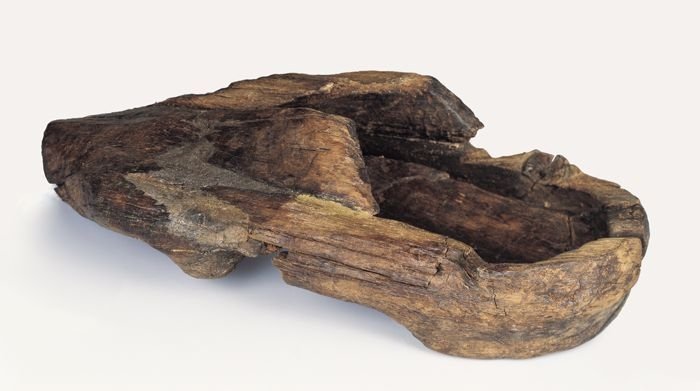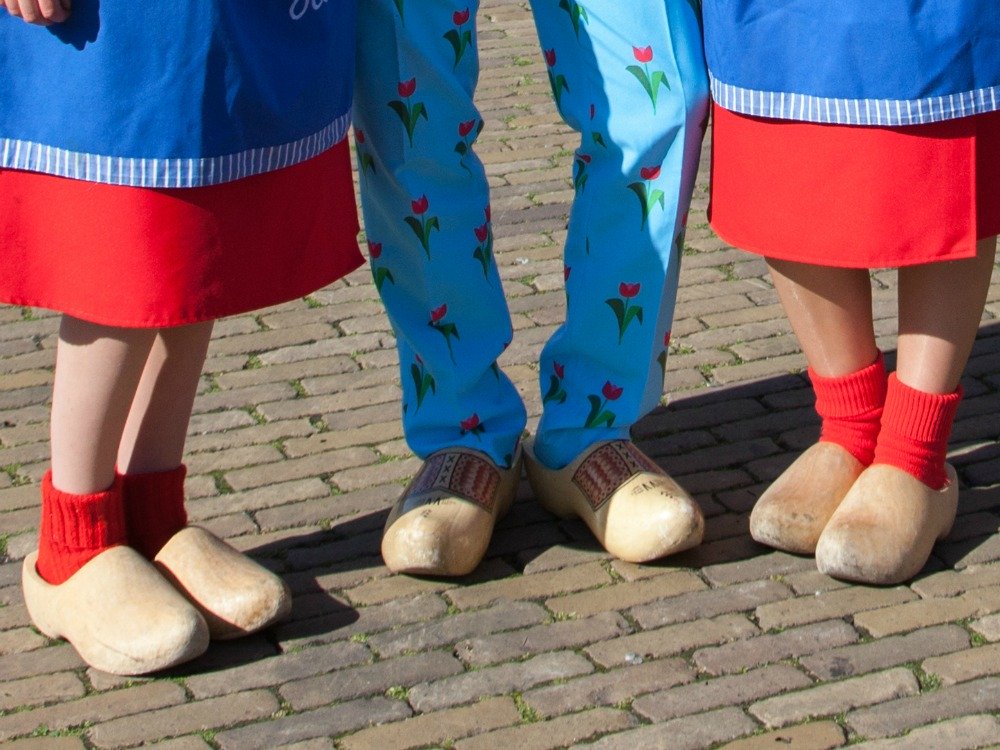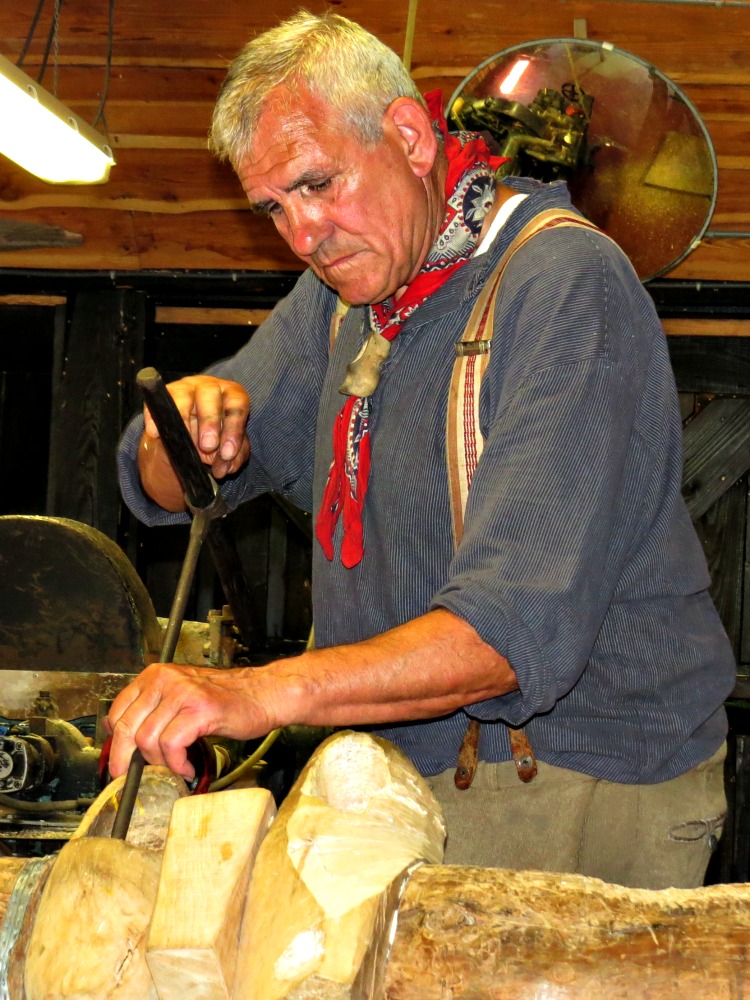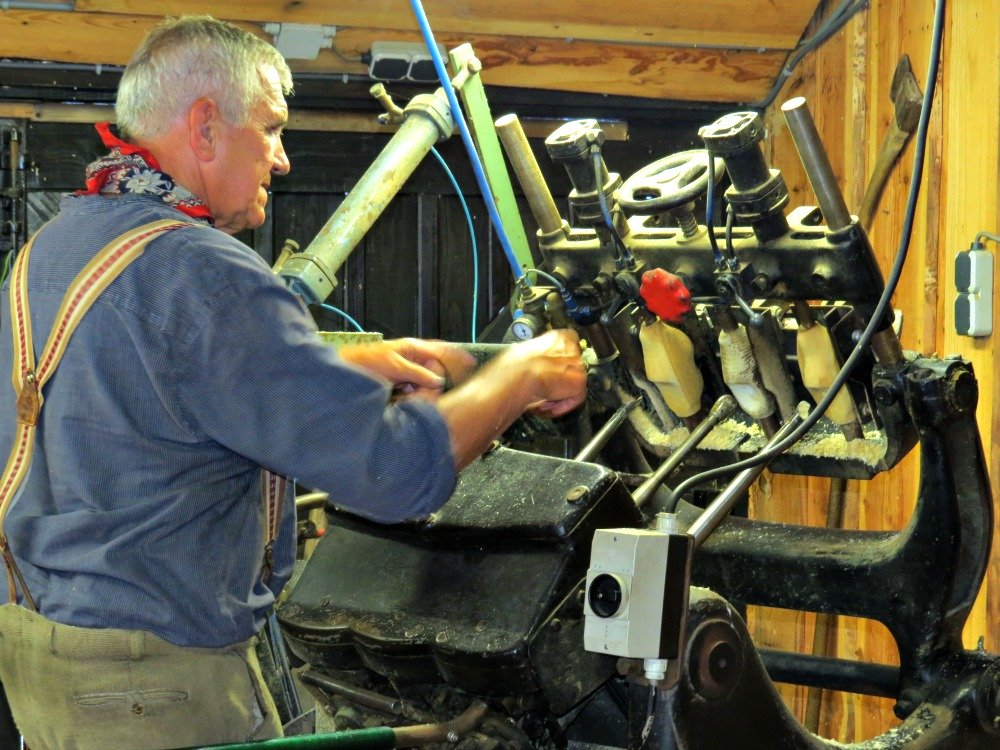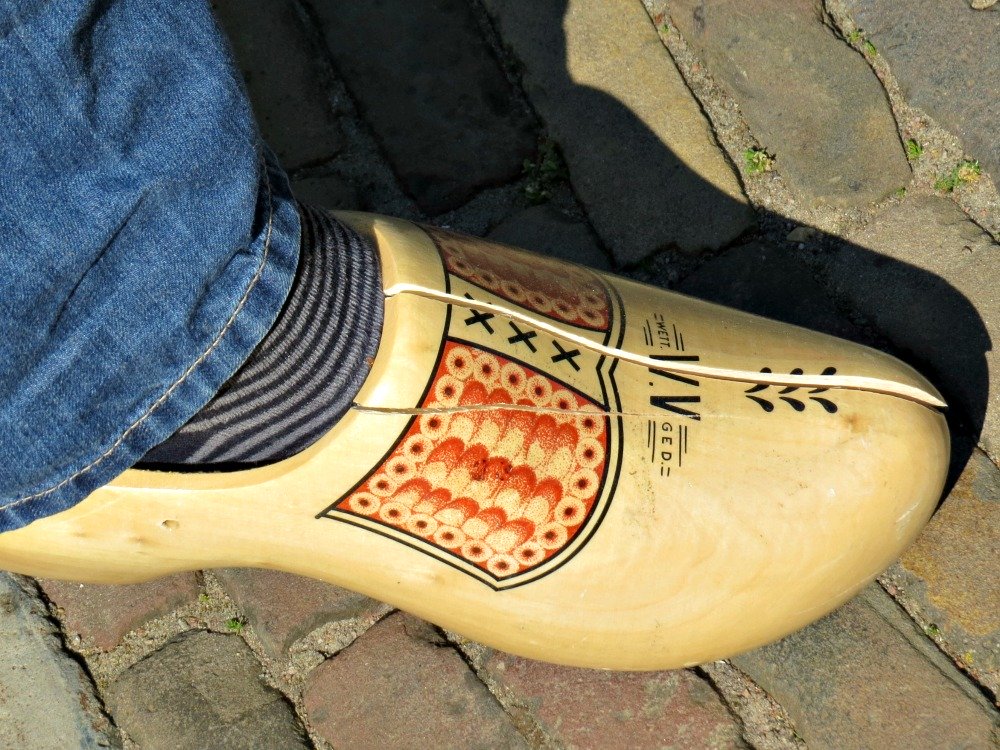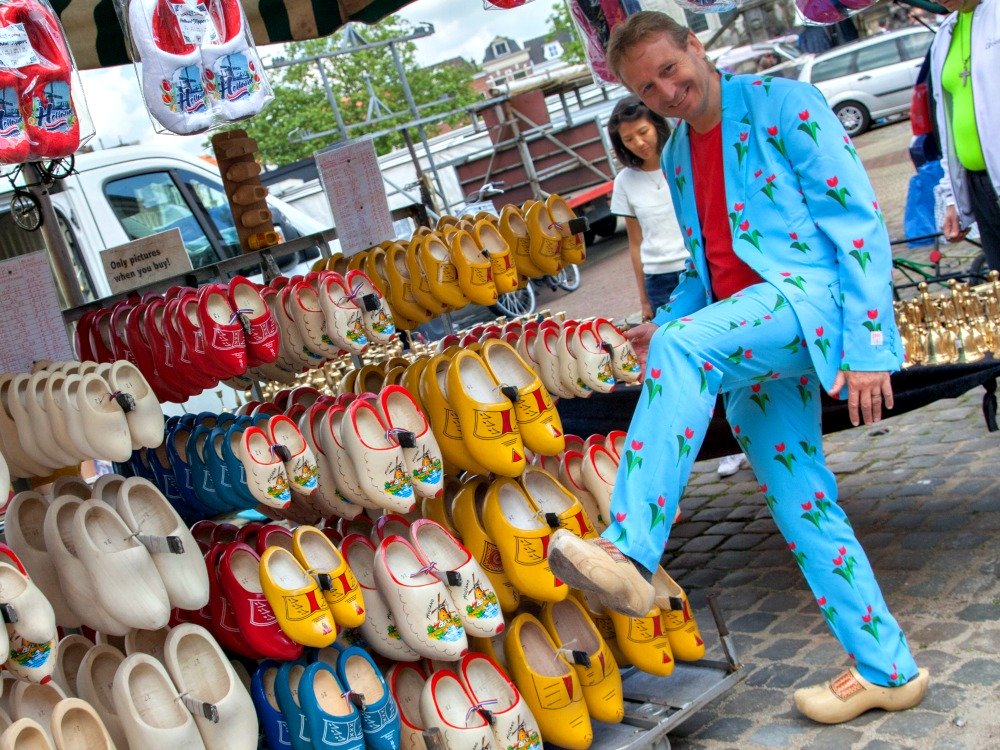Dutch wooden clogs, do we still wear them?
Dutch wooden clogs are the most remarkable traditional footwear in the world. Every Dutchmen knows these wooden shoes, but just a few still wear them.
When creating our plans for this websites, we decided to look as Dutch as possible. And that includes wearing original Dutch wooden clogs.
And everywhere we walk, we get a lot of questions about them. Every tourist in Holland recognises the clogs, as they do windmills, flowers and cheese. Many even think that all Dutch people still wear them.
Well that's not the case. But they are indeed a part of Dutch heritage. So here, we'll tell you all about them.
History of wooden shoes
Clogs, which is the general term for wooden shoes, were found throughout all of Europe.
From around the year 1200 onwards, people started to protect their feet, where it was common to walk on bare feet before that age.
So clogs are not unique to the Netherlands. But the Dutch landscape, full of swamps, was very suitable for clogs.
Where rich city dwellers chose nice leather shoes, farmers in the Dutch countryside sticked to the clogs. They are robust, safe, waterproof, and as an extra bonus: they were cheaper too.
That's probably the reason why Dutch clogs became so popular in the Netherlands.
Are they comfortable?
Well... not really. Or in other words, you got to get used to them.
Over the last century, less and less people wore clogs. "Normal" shoes became available to more people in the countryside as well as in the city. People started to choose these as they are more comfortable.
But, today there are still people wearing the Dutch clogs. Farmers and gardeners, mainly. They like the safety they provide, and that they are waterproof.
For Around Amsterdam, we (Jan and Patrick) started to wear Dutch clogs. And we learned some things:
- They are less comfortable on the street than in the field
- Wear thick socks, and even some extra cloth on the insteps
- Practise to walk smoothly on them
- Starting out, don't wear them all day...
Manual labor to create Dutch clogs
How were these clogs created, you might ask. With a lot of manual labor, I'll tell you that.
First, suitable pieces of wood needed to be found. With a special axe and chisels, they were carved in the right shape.
But then, the most difficult part: the inside of the clog. With a special drillknife, the hole in the clog is created, all the way to the toes. Not an easy task, as one mistake would ruin the complete clog!
All the cutting, trimming, drilling, shaping and measuring would take a full day of work for only one pair of clogs. Needless to say, that's not comercially attractive anymore.
Faster with a machine
So currently, there are machines to replace the manual labor. Two machines actually. One for the exterior of the clog, and one for the inside.
In both machines, a mold is used. The machines feel the mold, to know how to cut the wood. There are molds for every size and shape of the wooden shoes.
Input for the machines are the pieces of wood. They are cut from a poplar or willow tree, and need to have the right size. They also need to be very wet, for the chisels of the machines to work properly.
It is very interesting to see the machines at work. Especially the second machine, for the inside of the clogs. The clog maker needs to move the machine, for the chisels to go around in the insides of the clogs.
When the machines are finished, the clog maker does the final cutting and modeling. And then, the clogs need to be dried for 2 weeks before they can be painted.
Now my clog is breaking...
When we were walking around on our clogs, we found out how fragile clogs can be. Jan broke his clog, when descending the stairs in a windmill.
"Now my clog is breaking" is actually a Dutch saying. It is said in astonishment if something unforeseen happens.
Did you know that the breaking of a clog is actually a good thing? Safety shoes with iron toes, for instance, would dent in under heavy weight, causing serious injuries. A wooden shoe breaks, taking in the blow, without jamming the foot.
But, what to do with a broken Dutch clog? Farmers know the answer: there are iron staples available to keep the pieces together.
Where to find Dutch clogs
Dutch clogs can be found in any tourist shop you'll find in the Netherlands. Most of them are not for wearing though. They are nicely painted in any Dutch design you want.
The real ones, still worn today, can be found in the countryside Around Amsterdam. They are sold in retail shops for the agricultural branche in many villages.
Do you want to visit a demonstration of Dutch clog making (while visiting some other interesting Dutch sites)? Just contact us!
Return from Dutch Clogs to Dutch Culture
Return to Around Amsterdam

